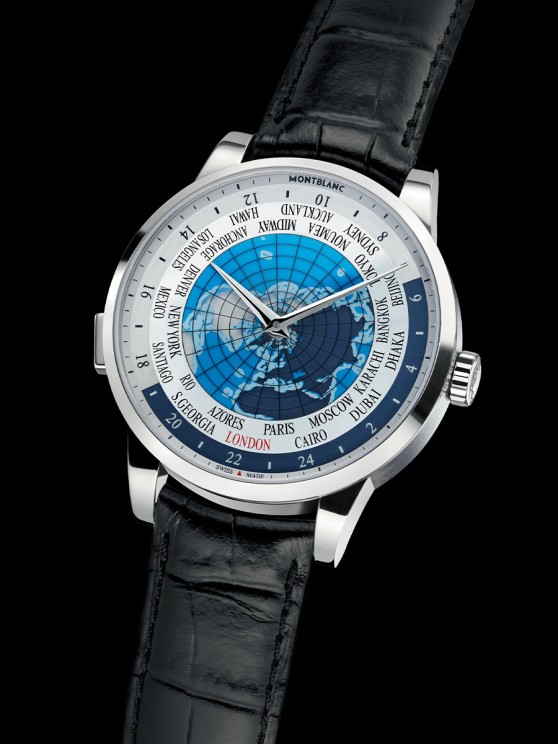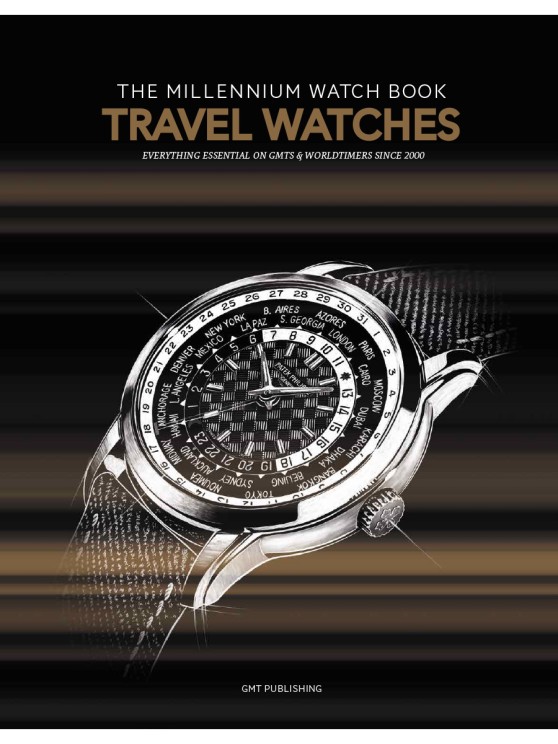The story begins exactly 10 years ago in 2014, when Montblanc first developed a new view of what a ‘worldtimer’ watch showing multiple zones bands should look like – the challenge being to offer a fresh perspective on a complication that many others had attempted. Montblanc’s response was unexpected in two ways: it was both a fully-fledged undertaking and relatively inexpensive. The fact that these two aspects (artistry and affordability) are usually polar opposites is precisely what made Montblanc’s offering so apposite.
The model was dubbed Heritage Spirit Orbis Terrarum, reflecting not just a name but an entire pedigree. On the one hand, the Manufacture was clearly positioning its watch in its ‘Heritage Spirit’ line; on the other hand, it was also spelling out the historic vision behind its portrayal of the world: the term Diviso Orbis Terrarum is Latin for ‘circling the globe’ and also connotes the world map made by Roman general Marcus Vispanius Agrippa in the first century AD for military purposes.

Heading for the North Pole
The projection used for this particular map is different from that used on most world maps nowadays: the continents are shown as they would be seen from the North Pole, using what map geeks refer to as a polar gnomonic projection. While the timepiece itself is highly contemporary in its construction, this view of the globe lends it a rare and more historical air. The idea is a daring one: the Heritage Spirit Orbis Terrarum is a modern, dynamic model for today’s globetrotters that nevertheless marshals style symbols with delightfully ancient overtones, a bold decision that underpins a fully-fledged artistic vision: Montblanc’s idea of what a worldtimer should look like.
At the same time, the timepiece is much more than an artist’s impression, as it’s also both fully functional and eminently readable. What’s more, by using this ancient projection, Montblanc’s Worldtimer arguably manages to be easier to read than many more contemporary projections. The fact is that here, the 24 traditional time zones (each with their reference city) all proceed from the North Pole. This makes reading the time very intuitive: the time zones radiate out from the watch centre with the central hours and minutes hands: following them along the black meridians leads to an indication of the reference city.
Montblanc’s masterstroke is to have added a translucent sapphire disc between the hands, half of which is dark blue; it travels above the white land masses, indicating where it’s night-time. As the disc rotates, it automatically changes the colour of the continents from light (day) to dark (night).

Simple and user-friendly
When the wearer travels to another time zone, they simply have to place the destination city at 6 o’clock using the pusher at 8 o’clock: this rotates the continents, cities, day/night disc, the 24 different time zones and the hours hand in one-hour increments, while the minutes hand remains unaffected. Once this simple adjustment made, local time at the new destination and time across the 24 time zones are perfectly synchronised.
First released in a 41mm diameter (later increased to 43mm) the delicately worked model featured a clear and accurate engraving of the world – and originally cost just €4,990. It was also available with a steel bracelet and red gold case. Later, several different variations of the Heritage Spirit Orbis Terrarum were produced, including some with gold-highlighted continents, sometimes on a guilloché dial, with a resolutely artistic crafts-based approach that’s continued to demonstrate its broad scope and relevance. The timepiece is now part of the Star Legacy collection.

Montblanc Heritage Spirit Orbis Terrarum
Case: stainless steel, polished bezel, horizontal satin-polished frame, world time pusher at 8 o’clock.
Dimensions: diameter: 41mm; thickness: 12mm
Movement: Calibre MB 29.20, 43-hour power reserve, 28,800vph (4Hz), 26 jewels
Functions: hours, minutes, seconds, worldtimer with integrated day/night display
Dial: sapphire crystal displaying Northern hemisphere continents and 24 cities corresponding to all 24 time zones; 24-hour disc with integrated day/night display rotating beneath sapphire crystal dial; dauphine-type hours and minutes hands with satin-brushed and polished finishes
Strap: black alligator leather with triple folding clasp
Limited edition: no
Launch year: 2014
This year, GMT Magazine and WorldTempus have embarked on an ambitious project: summarising GMT and Worldtimer watches since 2000 in The Millennium Watch Book - Travel Watches, a beautifully laid-out coffee table book. This article is an excerpt of the book. The Millennium Watch Book - Travel Watches is available for preorder in both French and English here.







